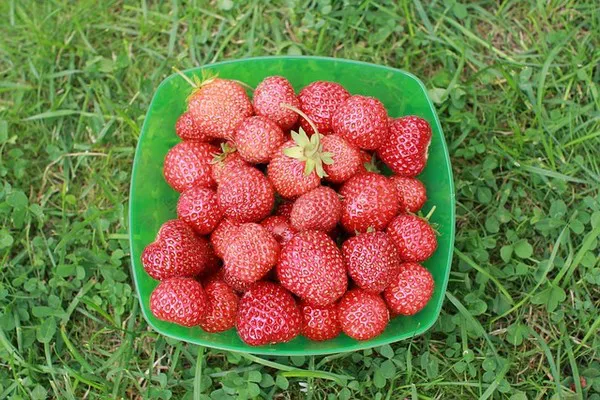Strawberries are one of the most beloved and widely cultivated fruits worldwide, known for their sweet, succulent taste and vibrant red color. To satisfy the global demand for this delectable fruit, understanding the intricate process of how strawberry plants reproduce is crucial. In this article, we will delve into the fascinating world of strawberry plant reproduction, exploring both natural and human-assisted methods that contribute to the proliferation of this favorite berry.
The Basics of Strawberry Reproduction
Strawberry plants (Fragaria spp.) are perennial plants belonging to the Rosaceae family. Unlike some other fruit-bearing plants, strawberries are unique in their mode of reproduction, which involves a combination of sexual and asexual reproduction.
Sexual Reproduction:
The sexual reproduction of strawberry plants begins with the formation of flowers. Strawberries are what botanists call “aggregate fruits” because they form from multiple ovaries within a single flower. Each strawberry develops from the fertilization of a single ovule within each of these ovaries.
The process starts with the blooming of strawberry flowers in the spring. These flowers typically have both male and female reproductive parts, allowing for self-pollination. However, strawberries benefit greatly from cross-pollination, which occurs when pollinators like bees, butterflies, and even the wind transfer pollen between flowers on different plants. Cross-pollination increases genetic diversity and often leads to better fruit production.
Once a flower is pollinated, it begins to develop into a small, green fruit. As the fruit matures, it transforms into the familiar red, juicy strawberry, containing numerous seeds on its surface. These seeds are the product of sexual reproduction and are spread when animals consume the fruit and excrete the seeds elsewhere.
Asexual Reproduction:
While sexual reproduction is essential for genetic diversity, strawberry plants also reproduce asexually through a process known as “vegetative propagation.” This method allows strawberry plants to produce genetically identical offspring, commonly referred to as “clones.”
Asexual reproduction primarily occurs through three main methods:
a. Runners (Stolons): Strawberry plants produce long, thin stems called runners or stolons. These runners extend horizontally from the parent plant and develop roots and new plantlets along their length. Once the new plantlets establish their root systems, they become independent strawberry plants genetically identical to the parent.
b. Crowns: Over time, strawberry plants develop a central stem structure called a crown. Crowns produce multiple shoots that can be separated and transplanted, resulting in new strawberry plants that share the same genetic makeup as the original plant.
c. Division: Strawberry plants can also be divided into smaller sections, each containing roots and shoots, to create new plants. This method is commonly used in commercial strawberry production to propagate healthy and productive plants.
Human-Assisted Reproduction
In commercial strawberry farming and home gardening, human intervention plays a significant role in strawberry reproduction to ensure desirable traits, high yield, and disease resistance. Several techniques are employed to facilitate controlled reproduction:
Runner Propagation: Commercial growers often use runner propagation to produce large numbers of strawberry plants from a single parent. Runners are carefully managed, and when they develop plantlets with well-established root systems, they are cut from the parent plant and transplanted to new locations. This method allows growers to maintain the genetic characteristics of productive and disease-resistant varieties.
Tissue Culture: Tissue culture, a laboratory-based technique, is used to mass-produce disease-free strawberry plants. Small pieces of strawberry plant tissue, such as shoot tips or leaf fragments, are grown in a nutrient-rich medium under sterile conditions. Once they develop into young plants, they can be transplanted to soil and later moved to the field. Tissue culture ensures uniformity in plant quality and disease resistance.
Hybridization: Plant breeders and geneticists employ hybridization techniques to create new strawberry varieties with desirable traits. By cross-pollinating two different strawberry plants, breeders aim to combine specific characteristics, such as flavor, size, and disease resistance, to create improved varieties. The resulting seeds are then germinated and evaluated for their performance.
Conclusion
The reproduction of strawberry plants is a fascinating process that combines sexual and asexual methods to ensure the survival and proliferation of this beloved fruit. While sexual reproduction introduces genetic diversity through pollination, asexual reproduction provides a means to propagate genetically identical offspring. Human-assisted techniques, such as runner propagation, tissue culture, and hybridization, further enhance our ability to cultivate strawberries that meet our desired criteria for taste, yield, and disease resistance.
Understanding the intricacies of strawberry plant reproduction is essential for both commercial growers and home gardeners alike. By harnessing the knowledge of these natural and human-assisted methods, we can continue to enjoy the sweet, juicy goodness of strawberries while ensuring the sustainability of this iconic fruit for generations to come.


